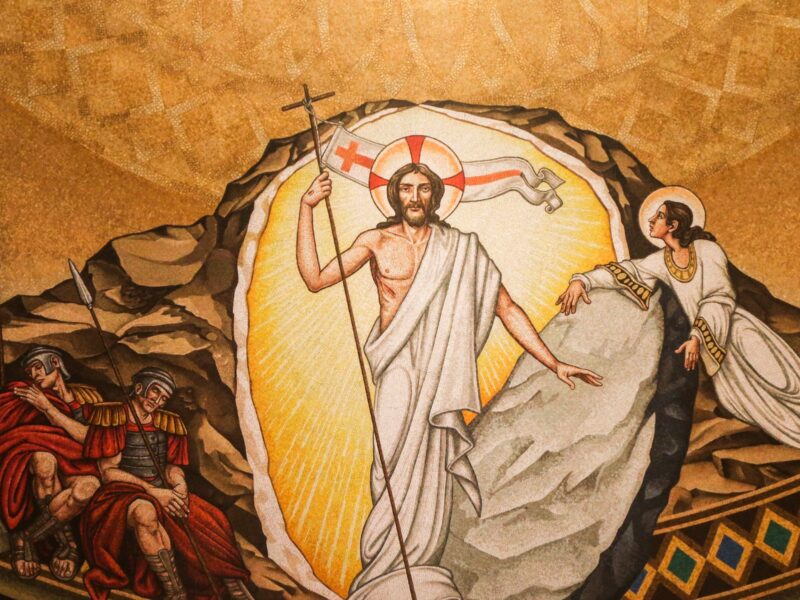
Living Stones
Fifth Sunday of Easter. Fr Benjamin Earl invites us to imagine a Church made of living stones.
Christ tells us in today’s gospel, “There are many rooms in my Father’s house”.[1] We are meant to understand, of course, that in heaven there is room for everyone who receives God’s call, and indeed a place individually prepared by Christ for each one of us.
But there are only two places in St John’s gospel where the expression “my Father’s house” appears. One is in today’s gospel, from Jesus’ farewell discourse to his disciples. The other occurs much earlier, where Jesus has a rather different sort of “farewell discourse” as he throws the money-changers and those selling animals and birds out of the temple.
“Take these things away,” he says; “you shall not make my Father’s house a house of trade.”[2] So the Father’s House is both the Temple in Jerusalem, and the heavenly abode of those whom Christ calls.
This is no great surprise. The Jerusalem Temple was supposed to be a sign of the Lord’s presence among his people, and so it is reasonable that it shares imagery with the heaven where God is ever present to his people. It is because the Jerusalem Temple was failing to live up to its role as a sign of heaven that Jesus found it necessary to cleanse it of its commerce and profiteering.
From what is the heavenly Father’s house built? The Temple was built with stone, splendidly decorated; but the house to which we are called is what St Peter today calls a “spiritual house” built from “living stones”.[3]
Now obviously the talk of heaven as a house and ourselves as stones is by way of analogy. But permit me a little thought experiment. I’m sure we have all seen “human pyramids” or “human towers” performed by gymnasts. Some of us may even have taken part in such structures… or tried to. What if we took these human pyramids to the next level, and had a whole church or cathedral built literally from a lattice of Christian gymnasts standing on each other’s shoulders?
Admittedly, before the structure got very big it would be too much for the “living stones” at the bottom to support. But have faith, and suspend disbelief (not to mention the laws of physics) for a moment.
The human lattice church would certainly be a very impressive structure. And indeed the Church is an impressive body, there is no doubt about that: she has preached the good news incessantly for millennia and brought Christ’s love to billions.
The human lattice church would, however, be a rather wibbly-wobbly unstable structure: anyone who has ever tried to be part of a human pyramid can confirm this! And the fragility of our faith and of our Church is apparent to us. We can’t hold this institution together on our own – and nor are we meant to. She was Christ’s Church before she was “our” Church, and it is Christ who is the original living stone giving firmness to his Church. We stumble, but he holds firm, and so the living lattice holds firm with him.
The human lattice church is one which has room. The lattice has holes where new living stones can be inserted and potential for whole new layers – and the Church is always inviting new members to be part of her, and new expressions of Christian life are always growing up in the Church. We don’t merely dwell in a room in the Church, but we become part of her dynamic fabric and structure. In our baptism and confirmation we are consecrated and anointed as individuals, but also to be part of the spiritual temple dedicated to Christ.
In this structure the gymnasts all depend on each other – it is the lattice which gives strength. So too in the Church we need to recognise our interdependence. We must provide for and support those in need, recognising that while we have different functions we are equal in dignity and equally requiring physical and spiritual nourishment, whether we are Hebrew or Hellenist, Apostle, Deacon or Widow, Cradle-Catholic or Convert.[4]
It is a fanciful image, this human lattice church. But the real Church is more impressive, more dependent on Christ, more accepting of new members and movements, more a communion of Christians, more loving among ourselves and towards the world. Or if, through human frailty, she isn’t, we must, with Christ’s help, constantly strive that she become so.


